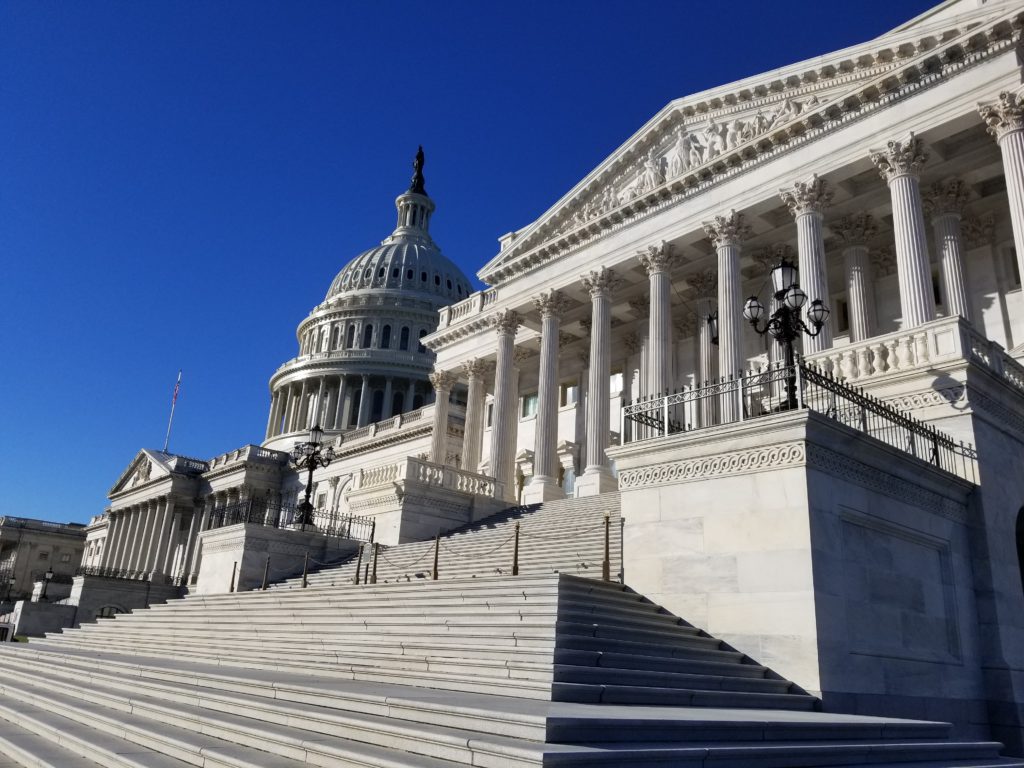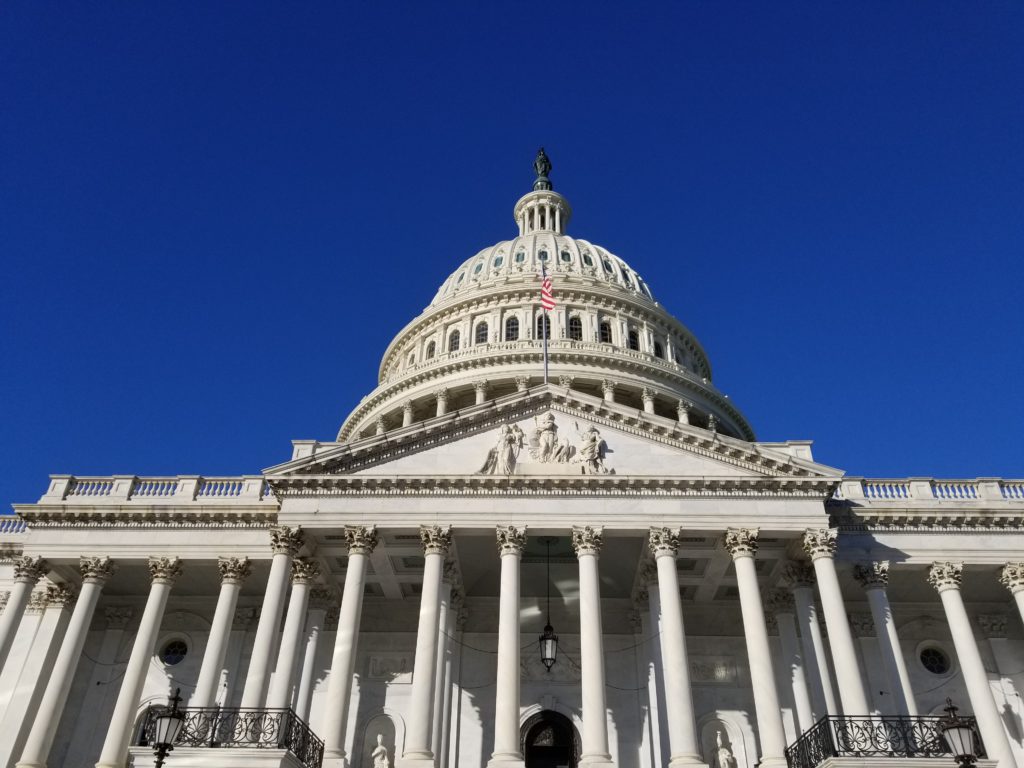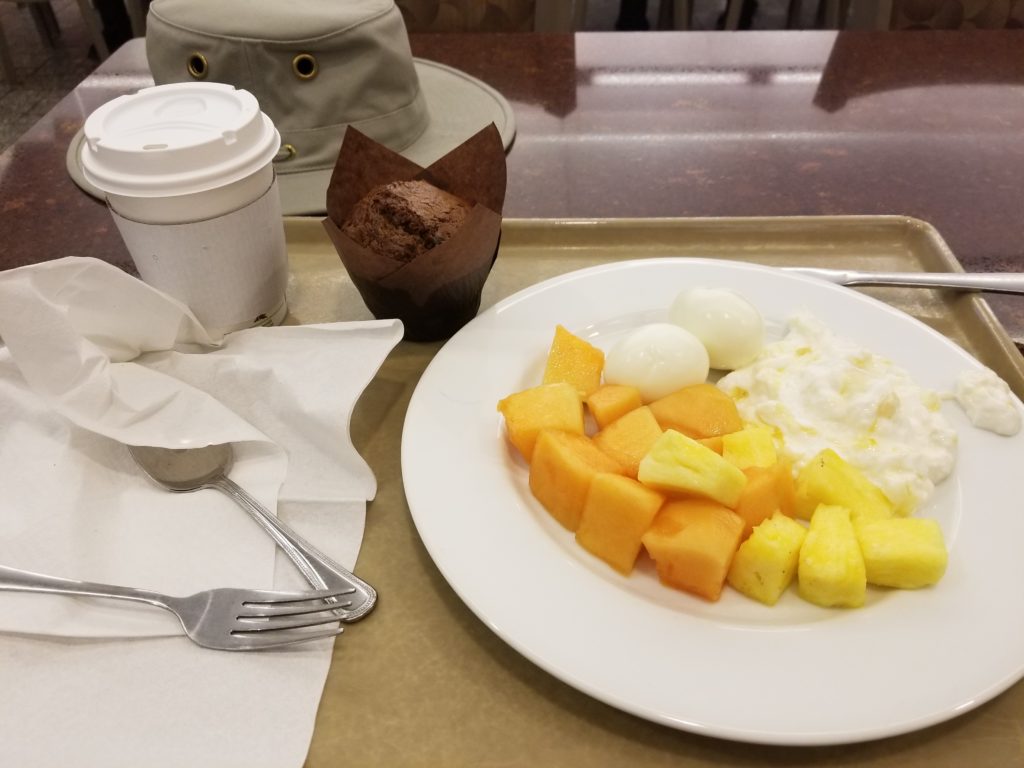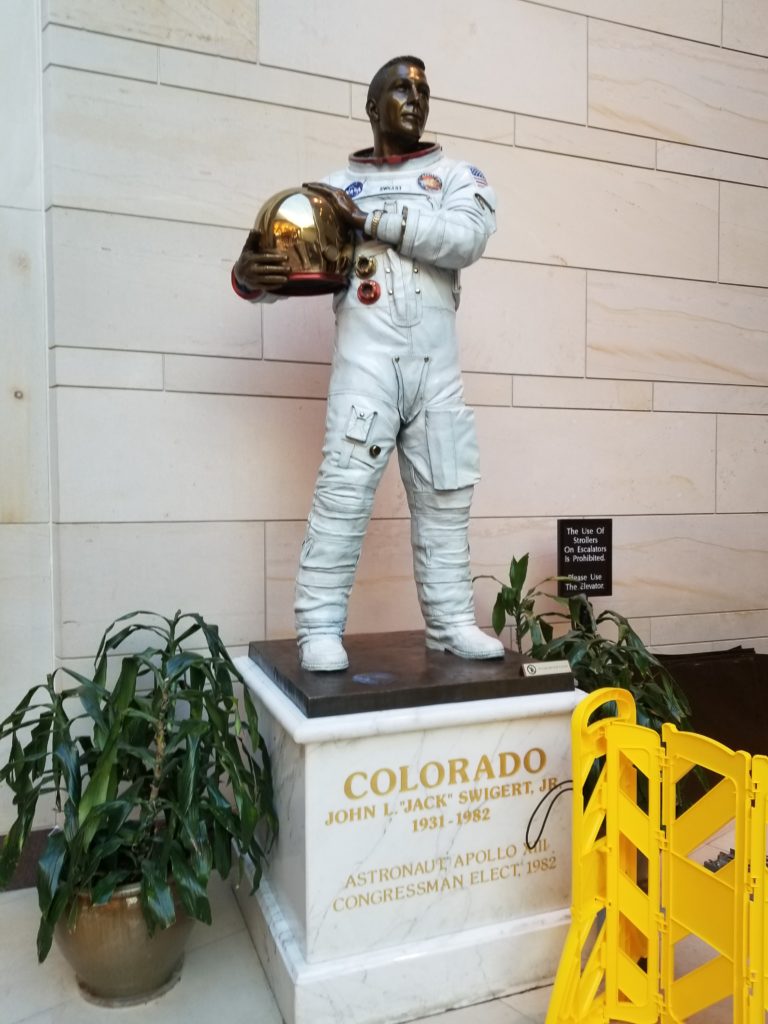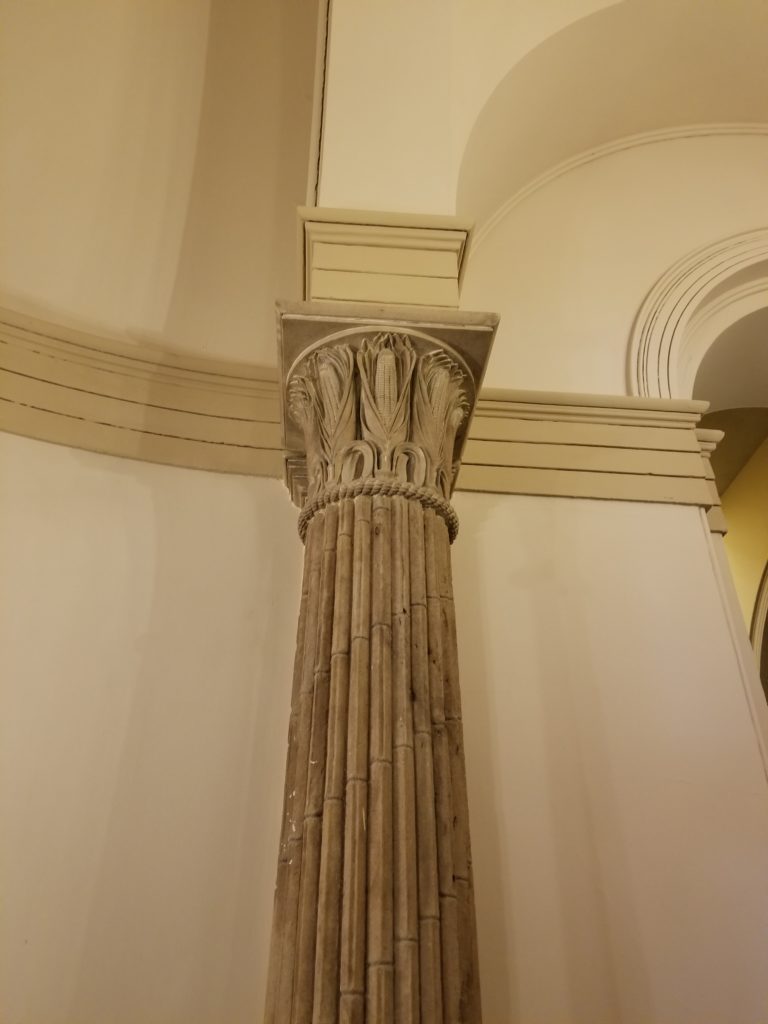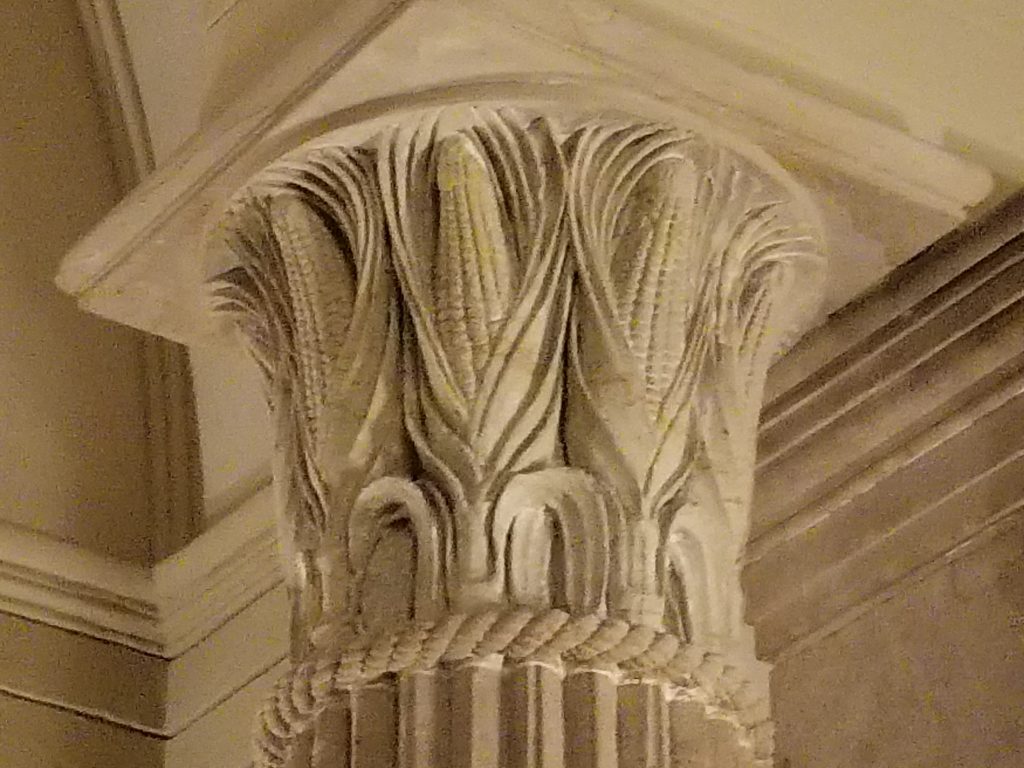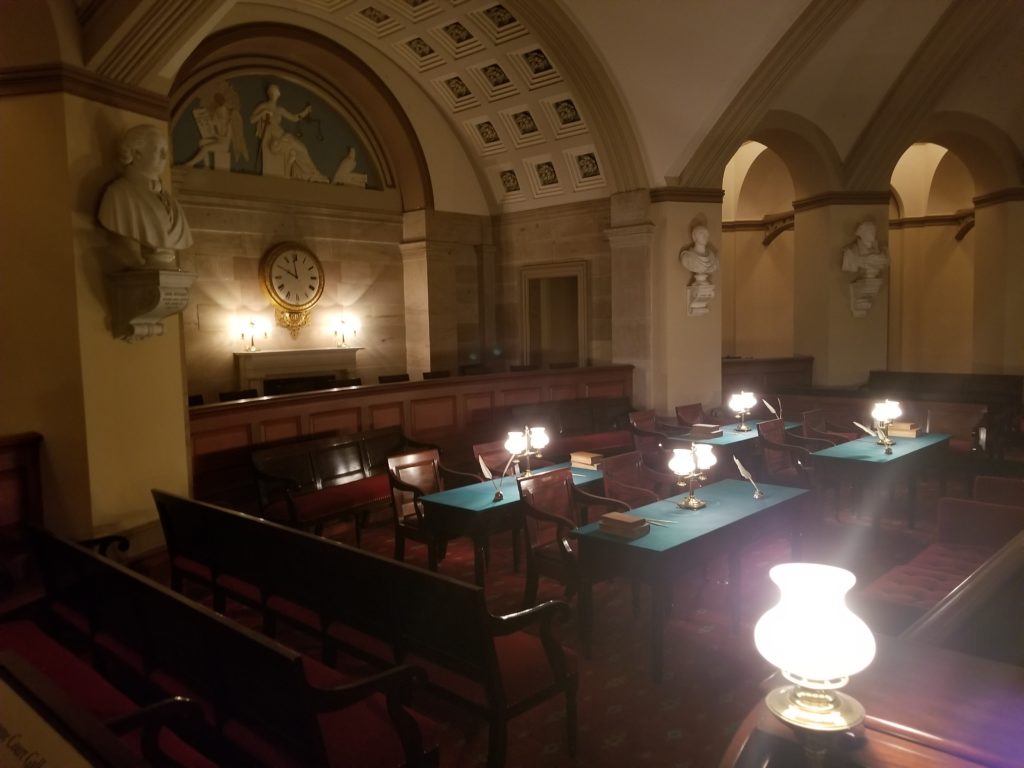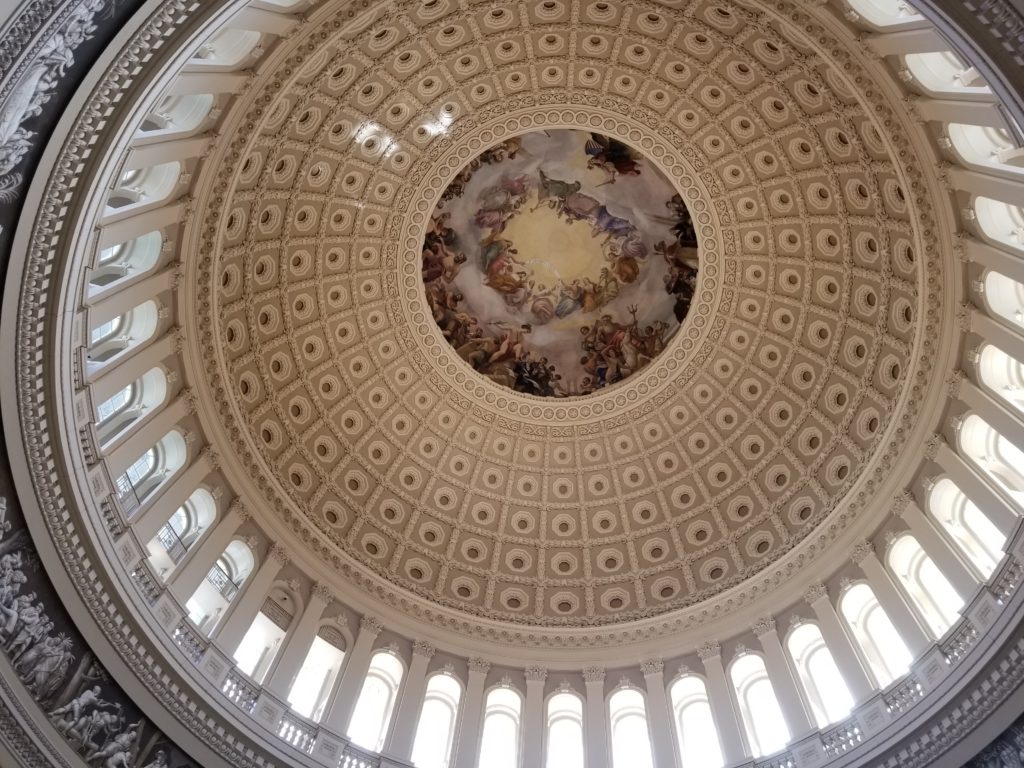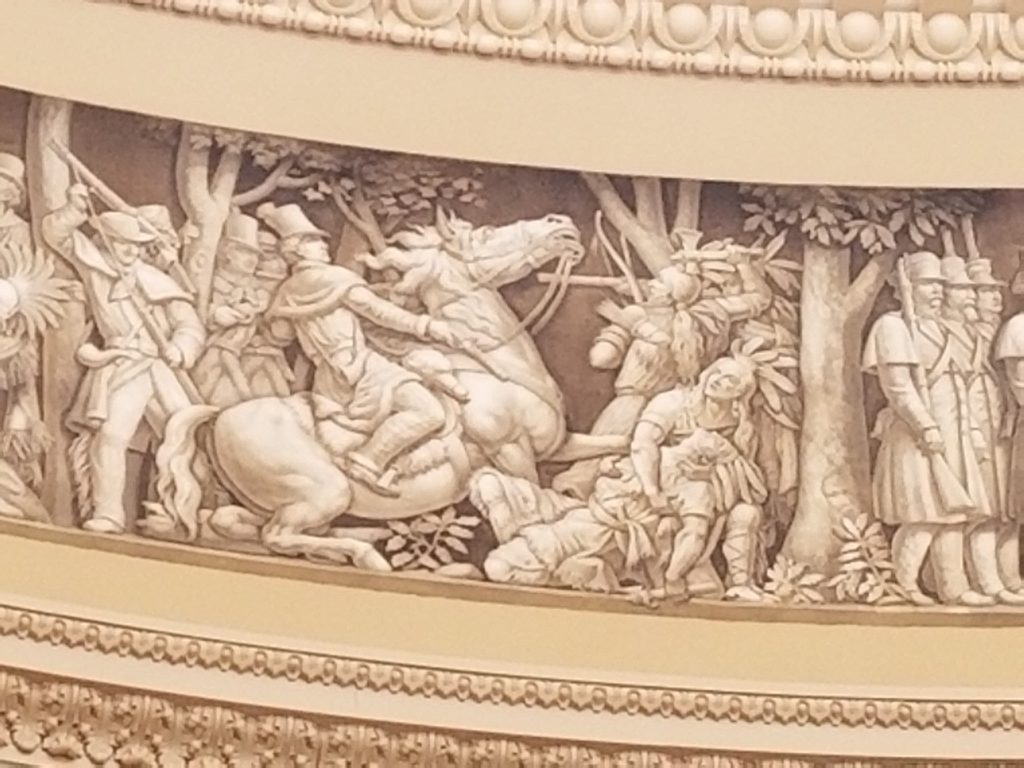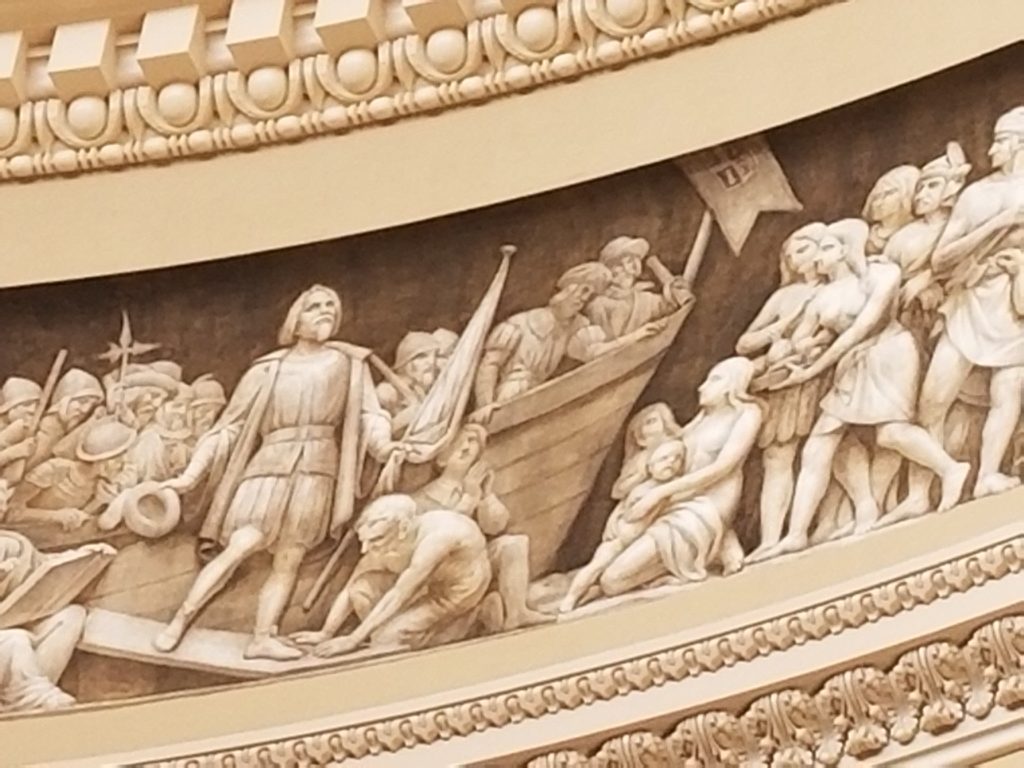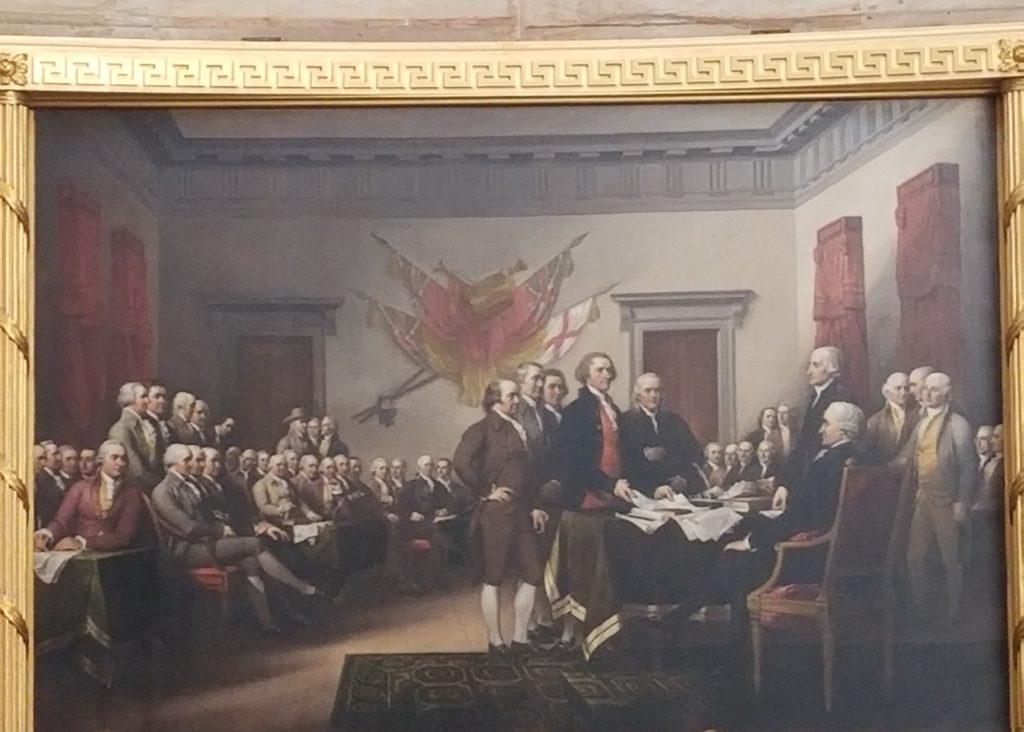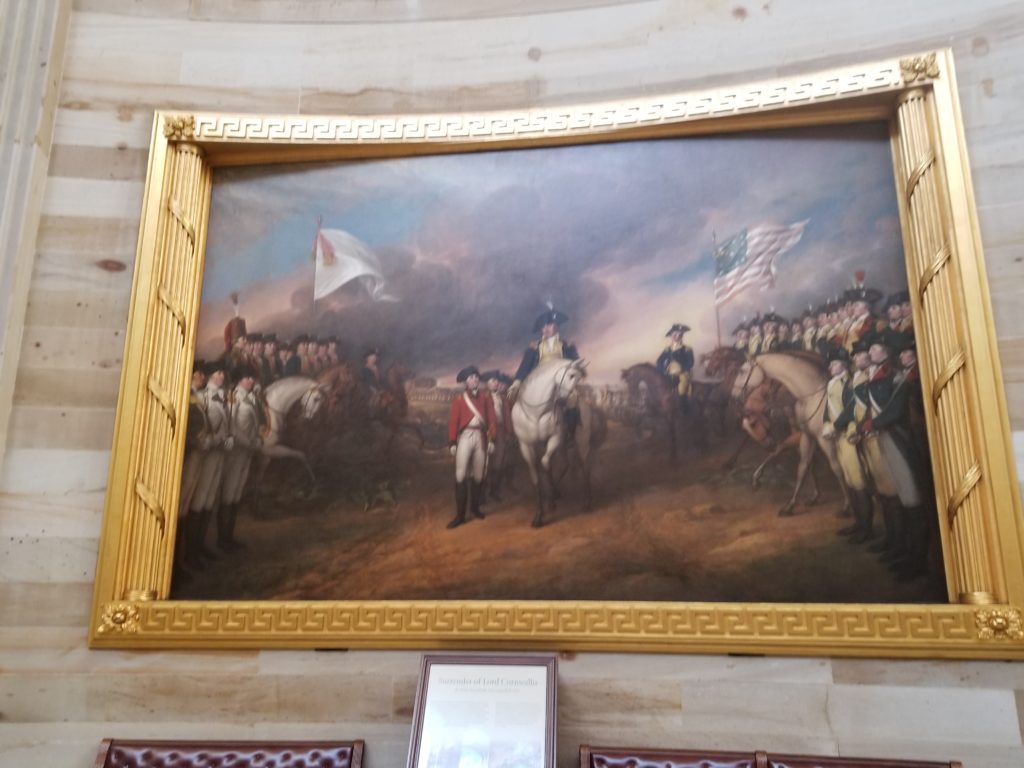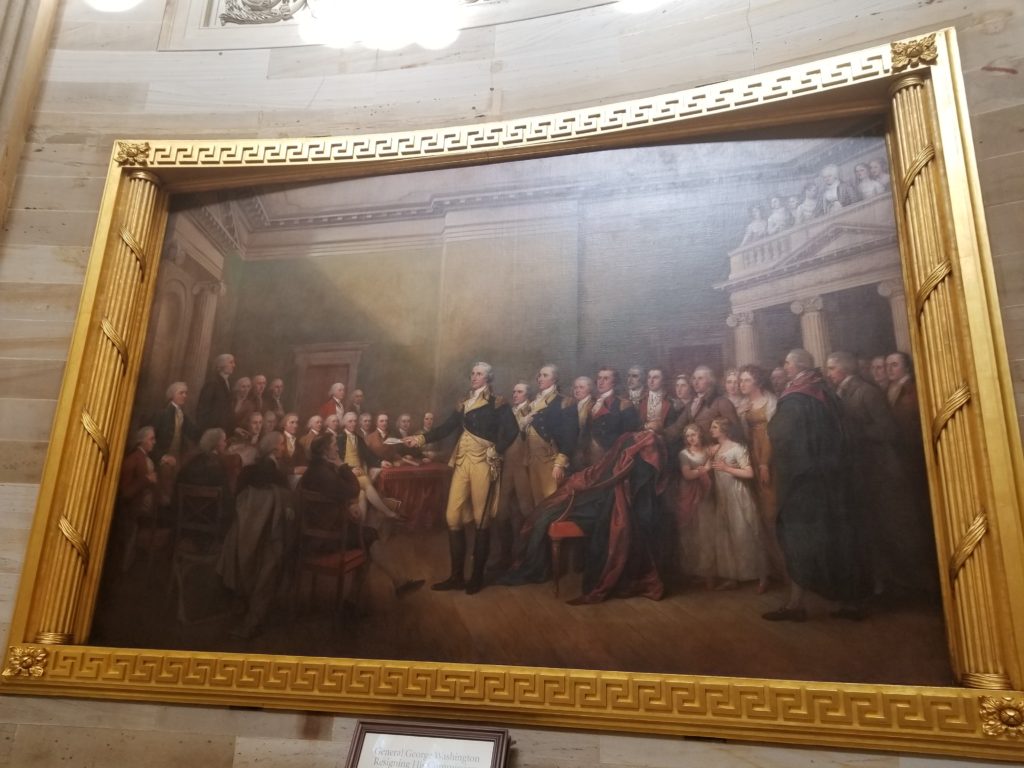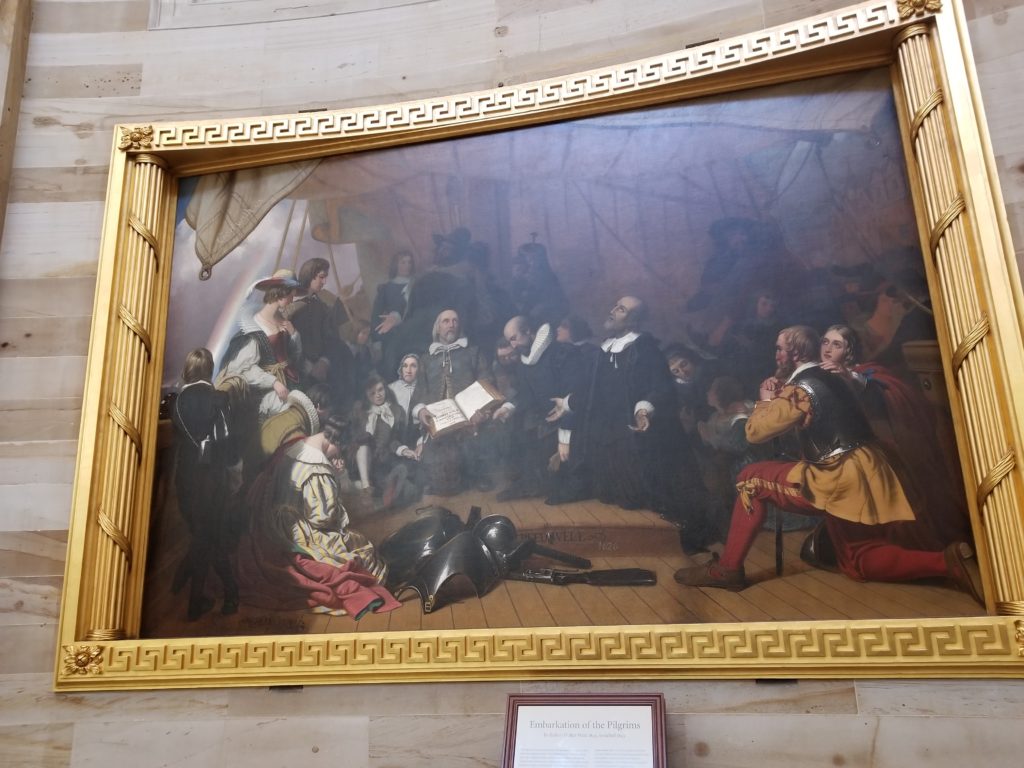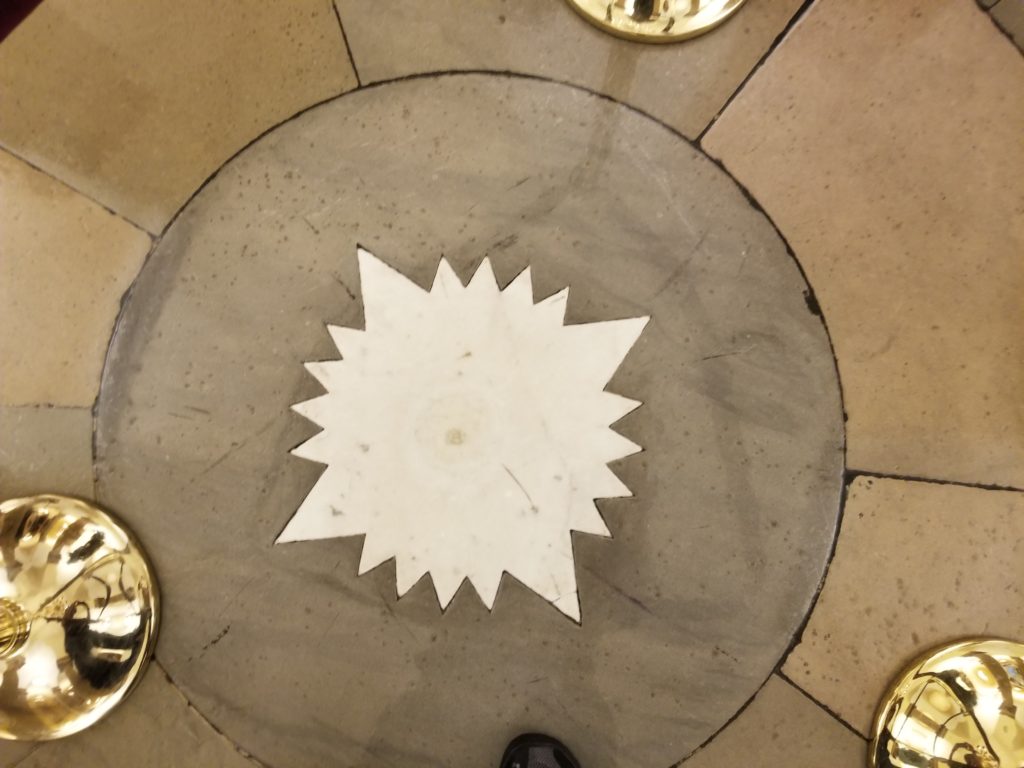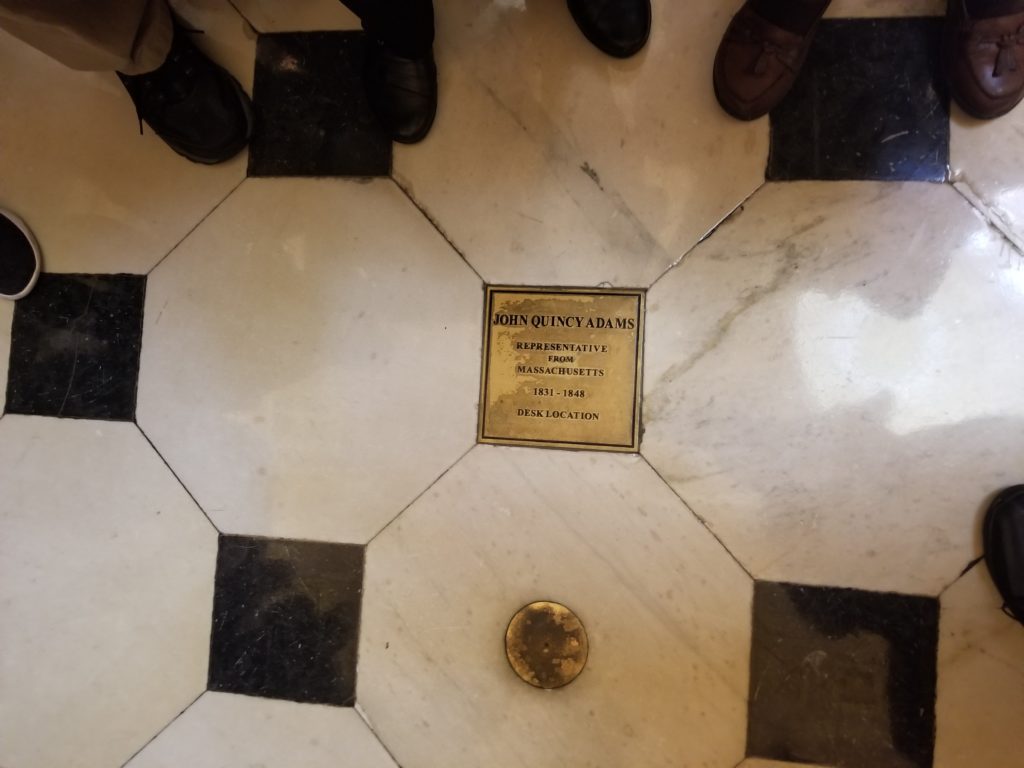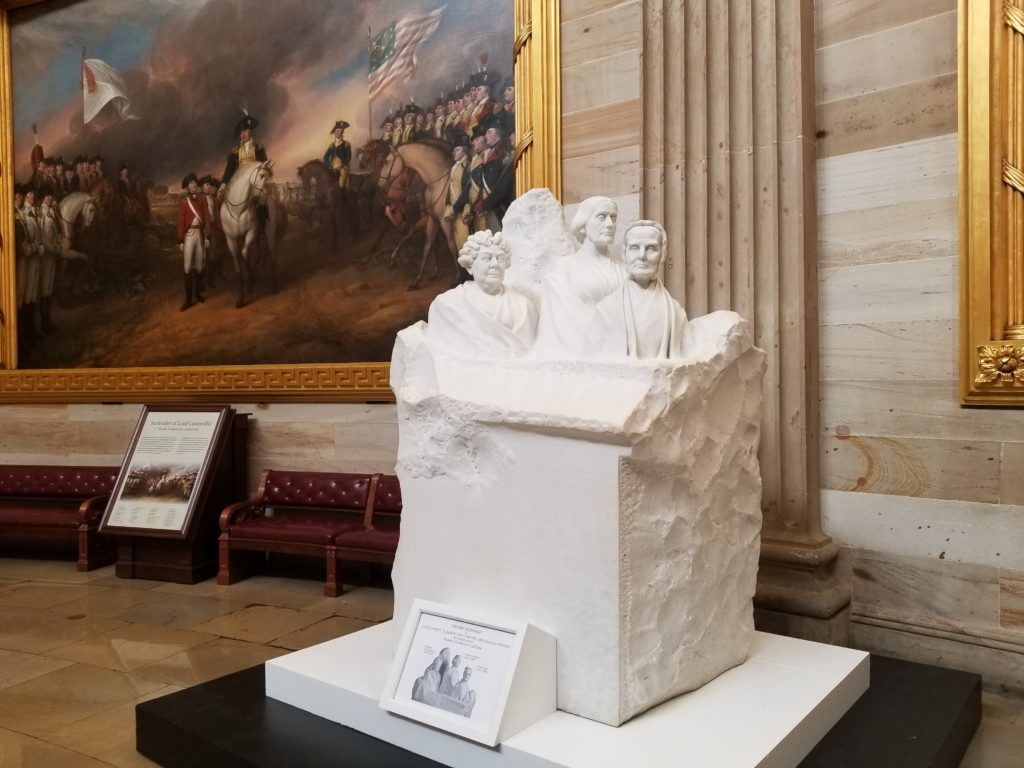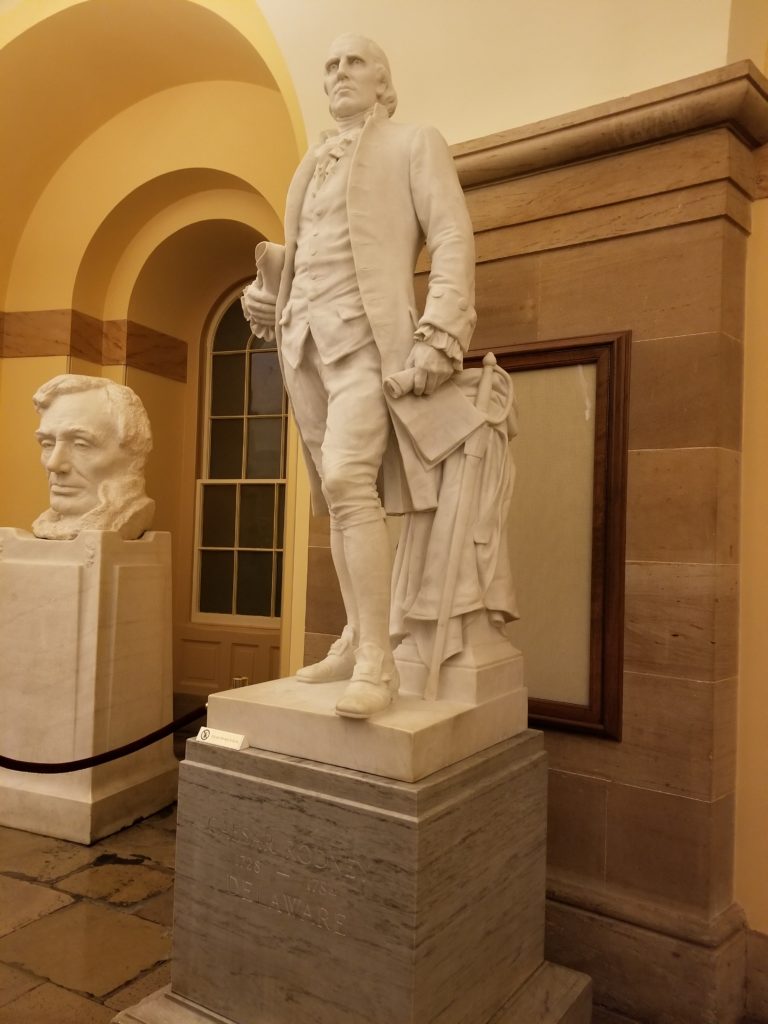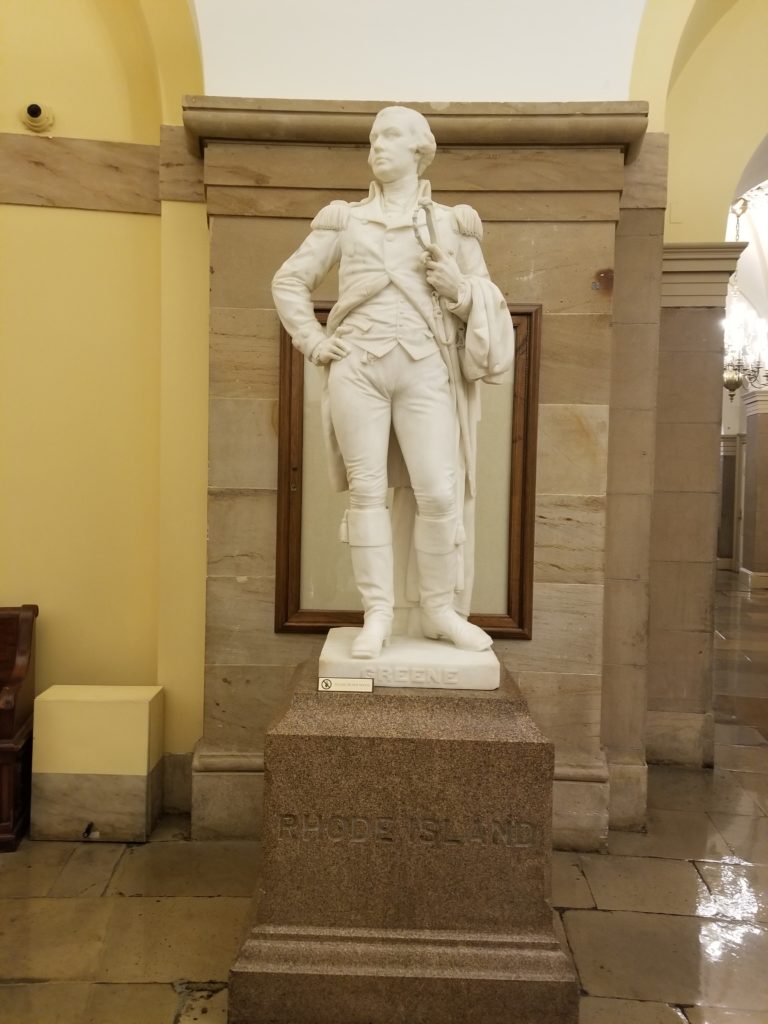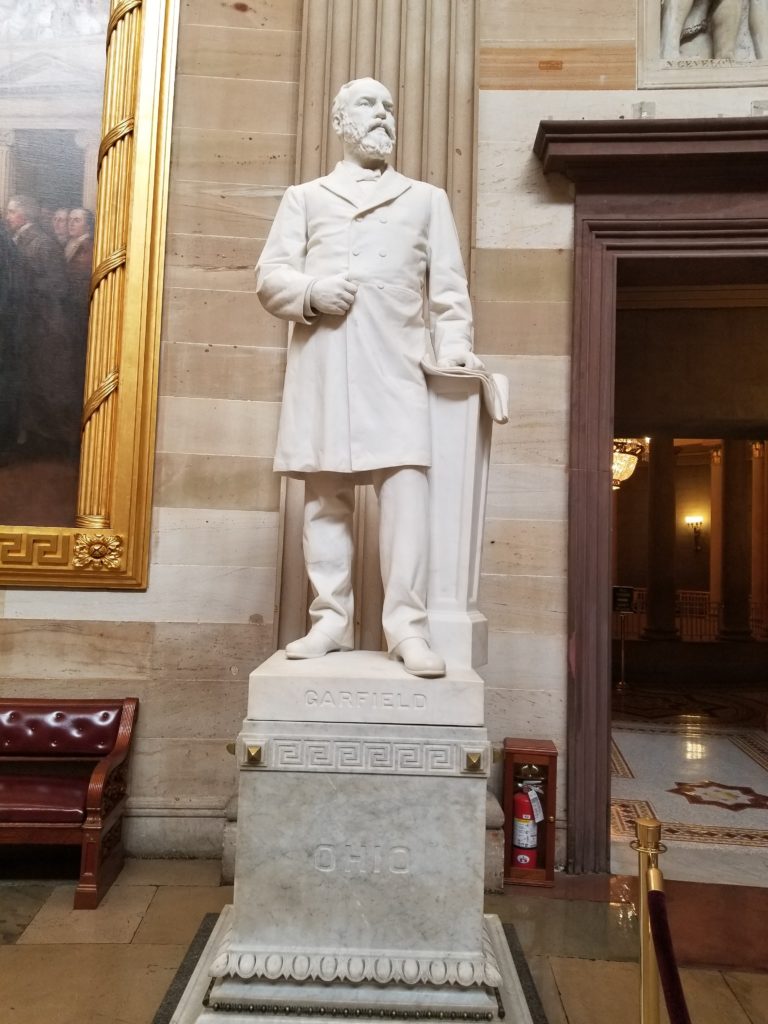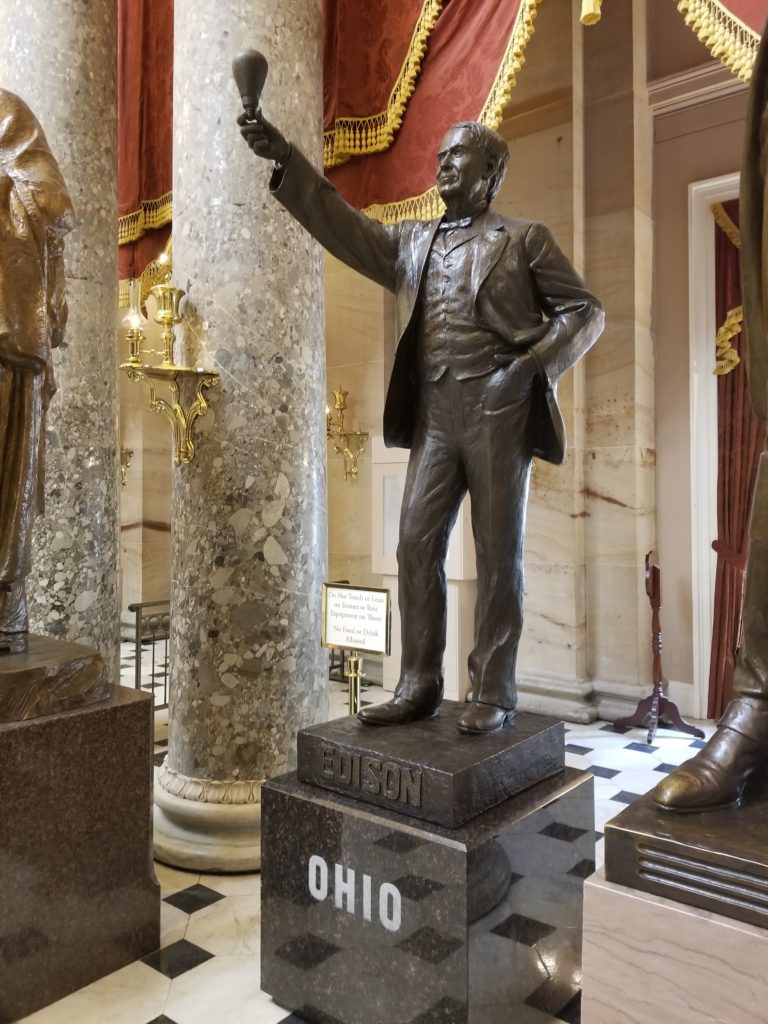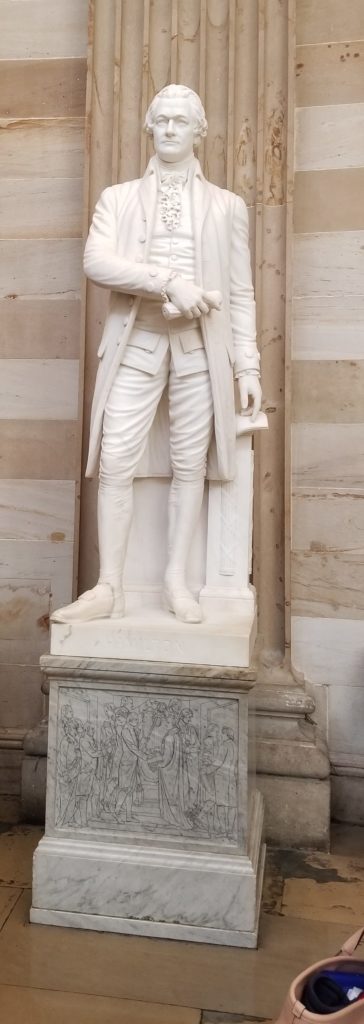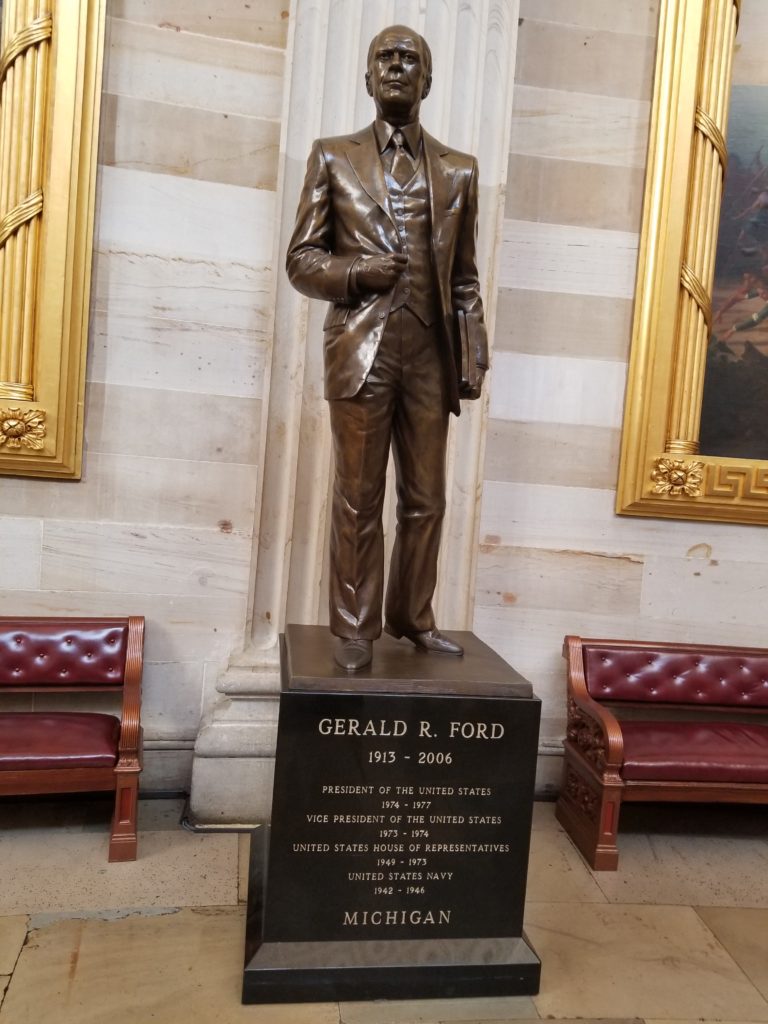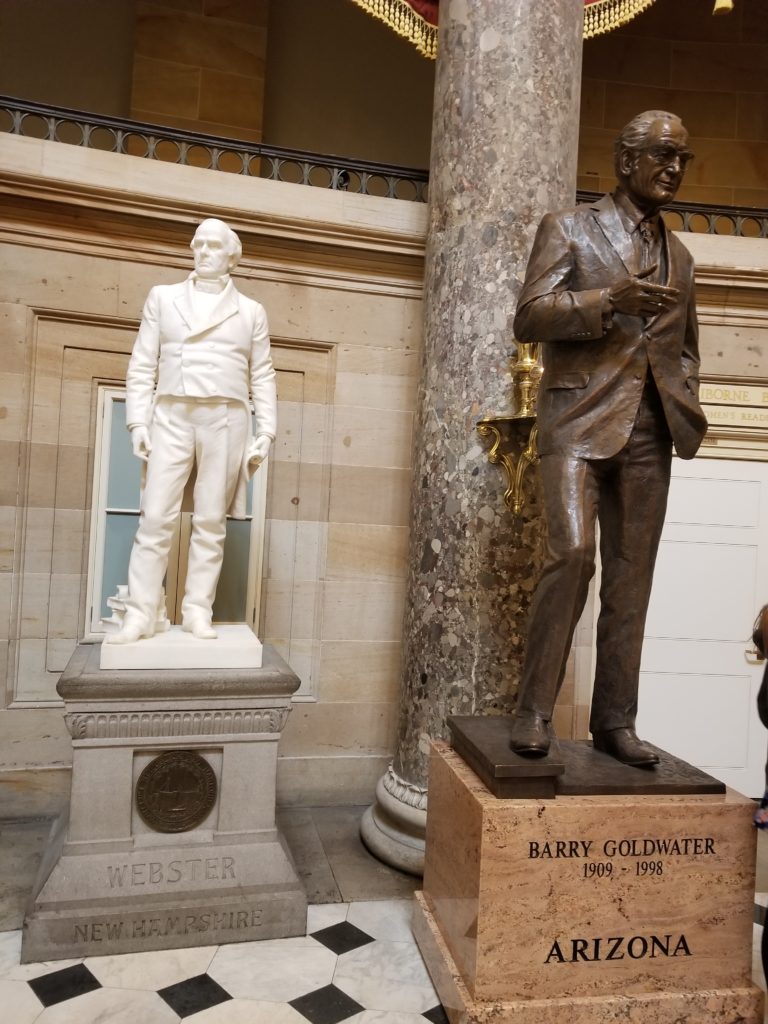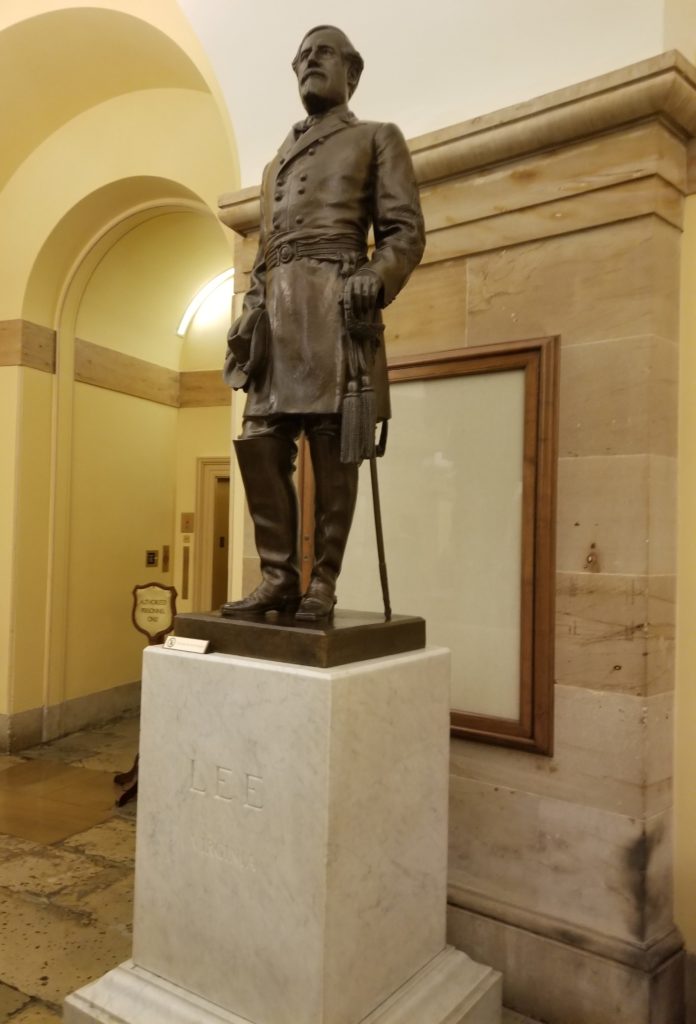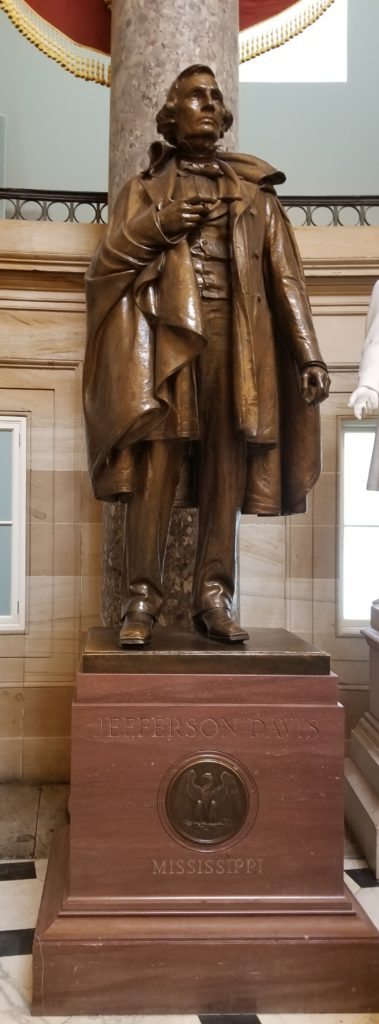In search of an affordable breakfast
It was the day after Election Day and I had several hours to kill. First, I decided to find an affordable place to have breakfast. I was staying at a four-star hotel on Capitol Hill that charged $30 for a breakfast buffet with the same items I had enjoyed at other hotels for half the price. As I looked at Google Maps, I noticed that the U.S. Capitol had a cafeteria that appeared to be open to the public. I figured: “Breakfast at the Capitol, why not?” So, I walked a few blocks to the US Capitol and took some pictures this amazing and beautiful neoclassical building that symbolized the very essence of my country. There was only one problem: How do I get in? I followed signs for the visitor entrance and only found entrances for people who worked there (i.e., members of congress and their staff) guarded by police with machine guns. This was quite different from when I lived in the area twenty years earlier and could simply walk up the steps in front of the building and into the front door to the rotunda.
Welcome to the U.S. Capitol!
It turns out the visitor entrance is on the east side of First St. and East Capitol St. To access the visitor center, you walk down into a tunnel under First St. Near the visitor center, I noticed that the lines for the U.S. Capitol tours were quite short, so maybe it would be worth trying to get into an impromptu tour after breakfast.
The U.S. Capitol cafeteria was very quiet and there did not seem to be anyone about except for the cafeteria staff. The food was basic cafeteria fare that included some healthy choices and the prices were quite reasonable. I realized that this was one of those secret quiet places that not as many people seem to be aware of.
A quick repast before my tour
Welcome to the Capitol
After my quiet and relatively healthy breakfast, I went back to the visitor center to see how easy it might be to get a tour of the Capitol. As I walked to the ticket booth, I noticed a striking statue representing my home state of Colorado. The statue was of astronaut Jack Swigert (1931-1982), who flew on the ill-fated Apollo 13 mission, which was supposed to land 3 Americans on the moon. The harrowing near-disaster captivated the U.S. and the world for six days as everyone watched the heroism and bravery of those three astronauts and numerous members of their team on Earth as they were able to safely make it back home. I was reminded how such events of heroism have a way of bringing everyone together, if only for a brief time.
Jack Swigert (Colorado) by George and Mark Lundeen (1997)
My trip to the front of the ticket line was quick and I was immediately given a ticket to be a part of the next tour at 9:10 a.m. I was pleasantly surprised at how quickly I could get a tour without any prior planning. Our large group of about 200 people were conducted into a large auditorium for a 15-minute video presentation to provide an orientation and a brief history of the U.S. Capitol. Before the video began, a guide asked all assembled what was the motto of the United States of America. After a few awkward seconds of silence, I had to blurt out “E pluribus unum” to which the guide approvingly acknowledged my correct answer. The motto is a Latin phrase that translates into English as “out of many, one.” Beyond that, it’s meaning could point to U.S. exceptionalism and possibly imply that we are somehow “better” than other countries. However, to others this motto may be interpreted as how our country was formed out of a rich diversity of ideas and people and speaks to the multicultural aspects of our nation. I’ll leave it up to you to form your own opinion.
Saved from the Inferno
After exiting the auditorium, I felt a mixture of pride in knowing the answer to the guide’s question and a bit of embarrassment of probably seeming a bit of a know all. Thankfully, we were next broken up into five smaller groups and would be each conducted separately by our own tour guide. The first feature our guide pointed out was some unique neoclassical architecture. The classical columns were familiar, but upon closer inspection the capitols at the top of each column were not the typical leafy Corinthian variety or Ionic with their scroll-like appearance. These capitols were capped with corn cobs, representing the only example in the world where such capitols appear. Our guide also informed us that these columns were some of the only items spared by the fire set by the British during the War of 1812. The British set fire to the Capitol and White House and other government buildings on 24 Aug 1814 after defeating American forces at the Battle of Bladensburg, forcing the U.S. government (including fourth U.S. President James Madison [1751-1836]) to flee Washington D.C. I remembered that this episode was the last time the U.S. suffered a direct attack on its shores until the horrible events of 11 Sep 2001.
The Highest Chamber in the Land
Next, we were conducted into the beautifully restored chamber where the Supreme Court met from 1810 until 1860. After serving as the chamber for the highest U.S. court, the room was used alternately as a committee room for U.S. Congress, a Congressional Library, and for storage before it was carefully restored to its original condition for the 1976 U.S. Bicentennial.
A Really Big Dome
After viewing the Old Supreme Court Chamber, we at last were conducted into the Capitol Rotunda itself where we had spectacular views of the dome from the inside. This includes an amazing panoramic mural inside the dome that convincingly looks like a series of marble sculptures documenting the history of the U.S. from the time Christopher Columbus encountered the New World in 1492 to the first Airplane flight by the Wright Brothers in 1903. The mural was created by several artists starting in 1878 and was not completed until 1951. There were also historic paintings that adorned the rotunda and my attention was caught by the one depicting the signing of the U.S. Declaration of Independence in 1776, Declaration of Independence by John Trumbull (1756-1843). This is probably one of the most famous paintings in the U.S. and was painted by Trumbull to celebrate the 50th anniversary of independence in 1826, depicting 42 of the 56 signers of the key document that established the United States as an independent country. Our guide demonstrated the amazing acoustics of the rotunda by having us stand close together near the center, remove our headsets that allowed us to more easily hear our guide, and listen as he spoke in a low voice about 30 ft away. To our astonishment, could hear him perfectly until he walked closer to use and his voice disappeared. In acoustics this is caused by the reflection of sound within a resonance cavity and is the same acoustics that enables the strings of an acoustic guitar to be heard.
See the face in the tree on the right? It’s a self portrait of one of the artists!
See the “bearded baby” just right of Coronado and his merry men? It’s another artist “selfie!”
Declaration of Independence by John Trumbull (1826)
Surrender of Lord Cornwallis by John Trumbull (1826)
General George Washington Resigning His Commission by John
Trumbull (1826)
Embarkation of the Pilgrims by Robert Walter Weir (1844)
At the center of the rotunda our view was directed downward (a challenge given the incredible views of the dome interior above our heads) to a star resembling a compass. Underneath this compass is an empty tomb that was built for George Washington (1732-1799), the first U.S. President. However, George Washington is not buried in the city named after him. George Washington is buried at his Virginia estate of Mt. Vernon. Mt. Vernon is a worthwhile site to visit where you can see the actual tomb of both George Washington and his wife, Martha, and see where he lived when he was not busy commanding the Continental Army or executing his duties as president. The compass on the floor at the center of the Capitol rotunda points along NE, NW, SE, SW, representing the four quadrants of the District of Columbia and our guide informed us that by walking a circle around the compass we pass through no fewer than six U.S. postal “zip codes.” The District of Columbia, is a 177 square km region that is shaped like a part of a square rotated 90 degrees (hence the NE,NW,SE,SE coordinate system for its streets and addresses) that lies between the states of Maryland and Virginia. This district represents a quintessential example of American compromise. The district was originally created out of land carved out from Maryland and Virginia to be independent of any one state so that state could not claim greater power by being the seat of the U.S. Government. However, it creates an interesting situation for its 693,972 residents (per the 2010 census) who are U.S. citizens, but have no direct representation in U.S. Congress. Because the District of Columbia is not a “state,” it sends no representatives or senators to Congress. This makes D.C. more similar to U.S. territories (e.g., Puerto Rico) in this respect. This irony is not lost on Washingtonians, whose license plates are often emblazoned with “Taxation Without Representation,” which happened to be key cause given for the U.S. declaring independence from Great Britain in the first place.
Statues Everywhere
The last part of our tour was to enjoy the numerous statues (as I mentioned there are 2 for each of the 50 states at any given time) that adorn the Rotunda Room and the National Statuary Hall which was where the U.S. House of Representatives met between 1807 and 1857. Before enjoying the statues, our gaze was first diverted downward once more to a plaque to commemorate sixth president John Quincy Adams (1767-1848) (son of second president John Adams [1735-1826]) who later served as a U.S. Representative from Massachusetts from 1831 until his death in 1848. The plaque on the floor of this room shows the location where John Quincy Adams’ desk as a U.S. Representative and where he collapsed on 21 Feb 1848 during a contentious debate on U.S. involvement in the Mexican-American War (1846-1848), which he opposed. John Quincy Adams died two days later on 23 Feb 1848.
The statues in the rotunda and National Statuary Hall were impressive indeed. There were numerous luminaries from U.S. history that included not only presidents, but also inventors, explorers, social activists, and scientists. The U.S. capitol hosts 2 statues per state on a rotating basis (after which, the statues are returned to their representative states and usually end up in state houses or museums).
Portrait Monument to Lucretia Mott, Elizabeth Cady Stanton, and Susan B. Anthony by Adelaide Johnson (1893)
Caesar Rodney (Delaware) by Bryant Baker (1934)
Nathanael Greene (Rhode Island) by Henry Kirke Brown (1870)
James Garfield (Ohio) by Charles Niehaus (1886)
Thomas Edison (Ohio) by Alan Cottrill (2016)
Alexander Hamilton (Artist Unknown)
Gerald Ford (Michigan) by J. Brett Grill (2011)
Daniel Webster (New Hampshire) by Carl Conrads (1894) and
Barry Goldwater (Arizona) by Deborah Copenhaver Fellows (2015)
Robert E. Lee by Edward V. Valentine (1909)
Jefferson Davis (Mississippi) by Augustus Lukeman (1931)
Quick Stroll around the National Statuary Gallery
Restored Patriotism
After enjoying my Capitol tour, I felt a great sense of pride of belonging to my country that had lately been significantly absent, partly due to the seeming constant stream of bad news that bombards us from the cable news networks. It occurred to me that despite our differences in cultural background and political views, we still need to remember that we are still one nation. It also occurred to be that given our current seemingly-divisive politics, those in charge of our government, including the ones that work in this building (and, for that matter, the current occupant at 1600 Pennsylvania Avenue) could greatly benefit from taking a Capitol Tour from time to time to remind them of the loftier ideals of those who founded the United States and to remind them of the awesome responsibility not to themselves, but in service to our great nation as a whole.
Final Impressions
How to Visit
As with other sites in Washington D.C., I strongly recommend visiting anytime except Summer when the weather is hot and humid, and there are swarms of tourists. October-November is a fairly good time of year to visit because the Fall colors are still visible, and the number of tourists seems significantly less. The Capitol lies at the east end of the National Mall and is closest to the Capitol South metro station.
To find out when U.S. Capitol tours are offered and learn more about the U.S. Capitol, visit https://www.visitthecapitol.gov/
Nearby
There are lots of museums and monuments that can be visited within walking distance or a metro ride from the U.S. Capitol. For more details, check out https://www.nps.gov/nama/index.htm and https://washington.org/. To visit the final resting place of George Washington, you can visit Mt. Vernon (https://www.mountvernon.org/), which is just a half-hour drive from the National Mall.

